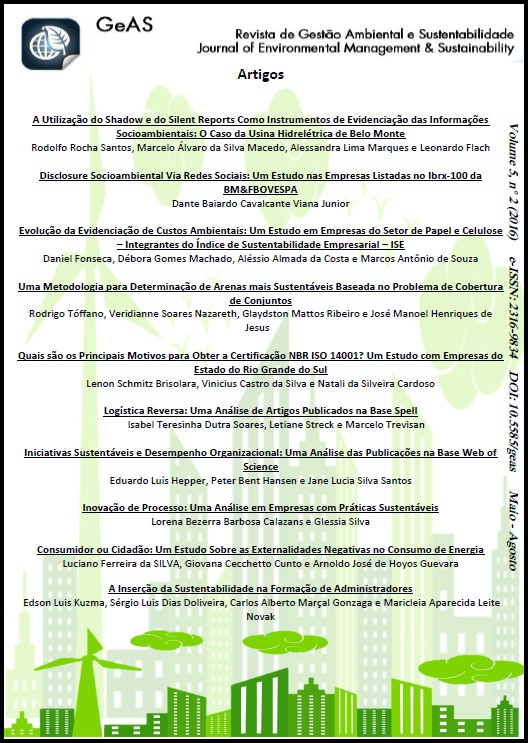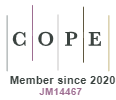Environmental and Social Disclosure Through Social Networks: A Study at Companies Listed in the BM&FBOVESPAIBRX-100
DOI:
https://doi.org/10.5585/geas.v5i2.388Keywords:
Socio-environmental disclosure, Social networks, Environment.Abstract
Environmental information disclosure by companies is a recurring theme in the academic and corporate world. However, it is observed that few national studies investigating the new social media such disclosure channels for this information. Thus, the study investigated the degree of environmental disclosure through social networks, from 45 Brazilian companies with an official account in Twitter and 40 firms in Facebook during 2014. Additionally, it was sought to examine a possible relationship between the total number of posts by the companies in social networks and the number of posts of a socio-environmental nature. The number of posts of the companies recorded in their official pages on Twitter and Facebook social networks has been counted. For identification of socio-environmental posts, we used a lexical analysis, with search for keywords and phrases related to socio-environmental disclosure in tweets and posts by the companies in Twitter and Facebook, respectively. Handling and processing of the data was carried out with the Excel® software, where the posts of the companies were exported to. After a descriptive analysis, it was possible to conclude that the disclosure of information from companies grew over the period. The results also revealed that the amount of socio-environmental posts in the companies’ official pages, both in Facebook and in Twitter, is low compared to the total number of posts, signaling a low socio-environmental disclosure from companies on social networks. By way of the Spearman correlation test, we could not find a statistical relationship between the total number of posts of companies and the number of social-environmental aspect posts. It is hoped, therefore, that this study will contribute to the national literature about the disclosure via social networks, which is still little consolidated when compared to foreign literature on the subject.










